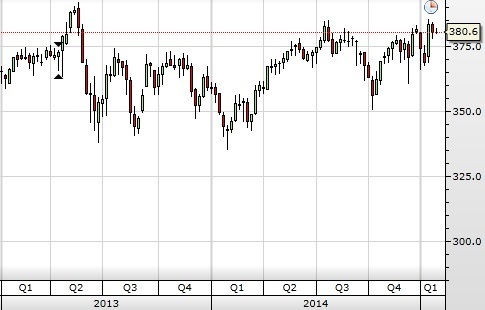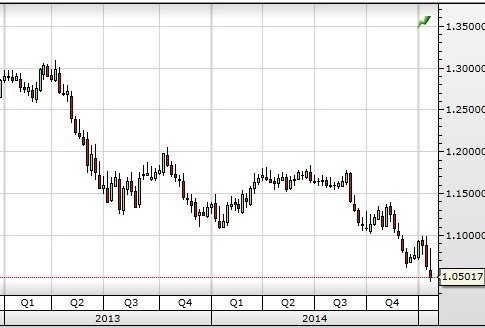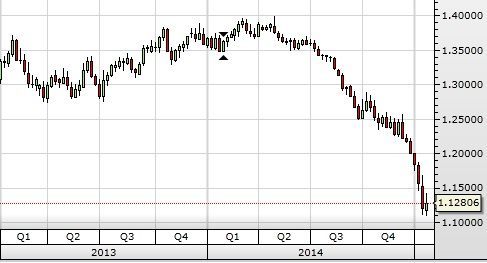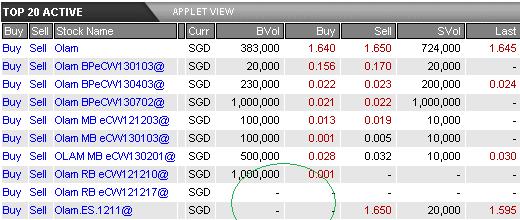To leave your comments, please go to : 2014 Investing and Trading Review – Part 2
]]>
For those who have not read part 1 which talks about some of my investments in 2014, you can find it here:
2014 Investing and Trading Review – Part 1
I will now go on to part 2 will talk about my experiences with futures and forex in 2014.
Futures
I currently trade only one type of futures contract – SIMSCI, which tracks the MSCI Singapore index.
SIMSCI
One SIMSCI futures contract gives a market exposure of $200 per point, which is about $76,000 based on the current value of 380.
I use SIMSCI when I want to take a short position on the market, as it is one of the most cost effective way of shorting the market. The charges are probably 10% or less compared to using CFDs. For more information on that, you can refer to one of my earlier article:
Trading the Singapore Market Using Futures
There is also no financing costs.
The only problem with SIMSCI futures is that the contract expire every month. So, if you want to express a long term view on the market using SIMSCI futures, you will need to manually roll-over the contract at the end of every month. This is a hassle and can sometimes lead to price slippages.
For 2014, I was using SIMSCI futures mainly as a partial hedge to my other long positions in the market.
Sometimes, I used the support and resistance lines to determine my entry and exits, but since this is meant as a hedge, most of the time I will just hold the position long-term.
I was short one contract of SIMSCI in January 2014 (carried on from Aug 2013) , and all the way from April to end of December 2014.
January went well, with a profit of around $4000 due to a correction in the market. The rest of the year wasn’t so good, as the market recovered and finished the year higher than it started.
I managed to avoid the Feb – March rebound, but the April to Dec run-up wiped out my January profits.
Furthermore, as I was trying to take on additional short positions during the roll-overs (which did not work out most months), I ended up making some additional losses.
Overall, my loss due to SIMSCI in 2014 was around $2,000. I treat it as the cost of hedging, which is not so bad as I would have been protected if there was a major correction in the market.
I continue to hold a short position in SIMSCI going into 2015.
Forex
I had positions in two currency pairs in 2014 – the AUD/SGD and EUR/USD.
I consider myself as a position trader, as my positions are held for the long term. I find day trading too tiring – staring at a screen whole day long waiting for a technical signal is simply no fun at all.
In forex trading, the leverage is very high, and you definitely do not want to hold a position that is beyond your comfort level. One thing I found out is that if a position is big enough to bother you, you tend to make all kinds of silly decisions like taking profits or cutting losses too early/late.
This often leads to disastrous outcomes.
Therefore, I tend to trade positions of 50,000. This is a position that I’m comfortable with to have long term positions without becoming irrational.
I don’t even login to the trading platform much to see the running profits or losses, perhaps just once every one to two months. However, I do monitor the market prices regularly on my phone.
Each position I trade will also be backed by at least $10,000 of equity, so as to avoid excessive leverage.
Now, a bit more on my two currency pairs.
AUD/SGD
This is one of my frequently traded currency pair for various reasons.
AUD/SGD tends to trade in a range, although once in a while, it does break into a long trend which can be very brutal if you are caught on the wrong side of it.
I hold some other investments denominated in Aussie dollars, so sometimes I use this pair to hedge the Australian currency if I find it to be trading quite high in its trading range.
However, as you need to pay interest costs if you short the AUD, it can be costly to hedge the currency for an extended period of time.
Last year, I had only two trades in it, both on the long side.
I initiated a long position in Jan 2014 at 1.12. The strategy was to simply hold it long term and earn the interest. This is also known as the carry trade.
The price actually went up all the way to 1.18 (profit of S$3k). I did not sell as this was meant to be a long term carry trade strategy.
However, the price subsequently clashed below my entry point and I temporarily closed my position in early November at 1.1275 off a rebound . The interest earned meant that my purchase price went down to 1.103 with a profit of around S$1200.
I re-entered the position again in late November at 1.11 with the intention of resuming the carry trade. On hindsight, the re-entry was a bit too early as the downtrend was still very much intact.
The position was down around S$1500 at year end, resulting in an overall loss of S$300 for AUD/SGD for 2014 after I factor in the earlier profit.
As I’m still holding on to this position (still holding on to my carry trade thesis), the losses on the open position has widened to S$3000 based on the current price of 1.052.
Not exactly a happy outcome coming from a very profitable position in the middle of 2014 but oh well, you can’t win everything.
EUR/USD
This currency pair was my big winner for 2014.
I had actually shorted this pair at 1.34 since September 2013. I have held on to it for the whole of 2014 and I’m still holding it currently. The price in 2014 for EUR/USD dropped from 1.37 at the start of the year to 1.21 at the end, which meant a massive move of US$8,000 in my favor. And the price has since dropped further to around 1.13.
This is a kind of no-brainer fundamental trade. With the US ending quantitative easing and on the verge of hiking interest rates but the Euro going into monetary easing, the Euro is bound to depreciate against the US dollar.
The problem with fundamental trades is that you can get the theory correct but the timing wrong. There are also counter-trend movements along the way which might cause you to be closed out from the trade and lose money.
So if you try to trade this short term or with too high a leverage, it might not work out. There is also a risk of being played out by the central banks.
I was actually too early in my trade but because I committed only a small initial position, I was able to hold it despite the early rally and then ride the downtrend all the way till today.
Also, if you miss the initial move in this kind of trade, it can be difficult to overcome your emotions to enter the trade.
Take one example – the USD/JPY, another seemingly no brainer trade with a similar investment thesis as the EUR/USD.
Having targeted to long the USD/JPY but missed doing so a couple of years back, I find it psychologically impossible to enter the trade with the price having moved from 75 to 120 in the space of two years.
One thing you quickly learn about the market is that there are endless number of opportunities popping up from time to time. It’s fine to miss one; you just need to find and make a few good trades.
What’s yours?
To leave your comments, please go to : 2014 Investing and Trading Review – Part 2
]]>To leave your comments, please go to : Phillip Futures Trading Challenge 2013
]]>Unlike most of the other competitions in Singapore, the Phillip Futures Trading Challenge 2013 will be based on the trading of your own personal live account.
This means real money and not simulated cash.
Once you register, trades in futures and forex using a Phillip Futures account will be eligible for the contest
I like the idea of using real money for the competition. This will discourage people from using competition specific strategies that are too risky to be employed in real life in order to win the competition.
The prizes are also quite attractive. The top trader stands to win $8888 (in cash and commission rebates) and there are also monthly prizes available.
Besides prizes based on performance, there are also prizes for the top volume traders.
One thing I don’t like about the competition is that it does not start everyone on a level footing. For some competitions that require you to use your real money, all participants are required to put aside the same amount of starting capital into a separate account for the purpose of the competition.
For Phillip Futures Trading Challenge 2013, there is no such requirement and you simply trade with whatever money you have in your account. As the competition result is based on profits ($ value), someone with a large account will stand a higher chance of winning compared to a small account. For example, someone with $100,000 only needs to make a 10% return and he will beat the results of someone who had $10,000 but made a 99% return.
Therefore I feel that it would have been better if the contest also had a separate category for the best percentage performer.
For more information and registration, you may visit the competition page: Phillip Futures Trading Challenge 2013
To leave your comments, please go to : Phillip Futures Trading Challenge 2013
]]>To leave your comments, please go to : SGX Public Consultation on New FX Futures Contracts
]]>The proposed FX futures suite will include deliverable and non-deliverable Asian currencies cleared in currencies such as the US dollar, Japanese yen and Singapore dollar. SGX will initially offer four currency pairs: the Australian dollar/US dollar, Australian dollar/Japanese yen, Indian rupee/US dollar and US dollar/Singapore dollar.
SGX is consulting the public on its first four proposed foreign exchange (FX) futures contracts.
These cash-settled FX futures contracts will be traded on and cleared by SGX.
SGX seeks the views of the public and market participants on the following proposals:
- Position Limits – The position limit for each FX futures contract will be 10,000 contracts net on the same side of the market and in all contract months combined.
- Price Limits – In line with the underlying over-the-counter FX markets and the practices of other exchanges, these contracts will have no price limits unless SGX prescribes them. This allows free price movements in response to market developments and information.
- Termination of trading – The last trading day for the FX futures contracts will be two business days prior to the third Wednesday of the contract expiry month, except for the Indian rupee/US dollar futures. For Indian rupee/US dollar futures, the last trading day will be two business days prior to the last business day of the contract expiry month.
- Final Settlement Price – The suite of FX futures contracts will be settled in cash based on proven and widely-accepted methodology.
SGX targets to introduce the new suite of FX futures contracts in the third quarter of 2013.
The consultation paper is available on SGX’s website at www.sgx.com from today. Market participants and members of the public can submit their comments and suggestions from today until 16 April 2013 via email to [email protected].
To leave your comments, please go to : SGX Public Consultation on New FX Futures Contracts
]]>To leave your comments, please go to : Olam Hit by Muddy Water Allegations
]]>Muddy Waters had in recent times published research reports against Chinese companies that trade in North America and had profited from its short positions. One notable case, Sino-Forest Corp eventually filing for bankruptcy protection in March 2011.
Carson Block from Muddy Waters questioned Olam’s accounting methods and was due to publish a research report on Olam.
Olam Plunges After Muddy Waters’ Block Questions Accounts (Bloomberg)
Olam immediately took steps to suspend its share from trading as it wanted time to respond to the report before letting its share trade again. As the report wasn’t published, Olam decided to lift trading suspension at 1530hrs on Tuesday.
The Company had requested for a trading halt pending the release of a purported and detailed report by Carson Block and/or Muddy Waters, which from media reports was to be released early today. This release has yet to take place. The Company is therefore requesting that the trading halt be lifted to allow investors to continue to trade in the Company’s securities.
The Company and its Board of Directors strongly rejects the assertions made by Carson Block and/or Muddy Waters. We will reserve the right to take strong and appropriate action with regard to any unsubstantiated or baseless assertions made in the media by parties whose motives might be in question.
I did a quick check of the share price of Olam. It was down almost $0.20 at one point but recovered to close at $1.605.
Of Olam’s listed derivatives, all were call warrants and there no put warrants.
The extended settlement (ES) contract, which is essentially a single stock futures, would have allowed one to take a short position on the stock. However, there were no bids! Looks like the designated market maker for Olam ES has chickened out.
So, you can’t short Olam using ES.
At least one CFD provider (I suspect all of them) has disabled shorting of Olam as well.
Anyway, Olam’s share price had already been a under-performer this year among Singapore listed stocks. It will be interesting to see how the drama unfolds.
Incidentally, Temasek Holdings is the second largest shareholder in Olam, with almost a 16% stake.
Muddy Water has since published their response to Olam’s reaction.
Muddy Waters Reaction to Olam Frantic Response
To leave your comments, please go to : Olam Hit by Muddy Water Allegations
]]>To leave your comments, please go to : How to Invest In Gold In Singapore
]]>In this gold-related article, I shall list out the ways that an individual can do so along with the pros and cons of each method. This article is meant to be introductory, so I will also try to provide the link to the product page for more details (if applicable).
I just want to highlight that there is no best way, as the option that is most suitable for you will really depend on your investment objectives and personal financial situation.
However, one thing certain is that you should avoid those companies that sell you gold at a high premium to the spot rate, and then try to entice you by giving you a monthly or quarterly cash via a so-called guaranteed buyback option.
Gold Bars and Coins
Some of the banks do sell gold in its physical form.
There is currently a huge spread due to GST but once that is abolished in October 2012, the buying of gold bar and coins will become a more viable option.
This would be for the more traditional investors who prefer to own the physical asset although storage and security might be an issue.
Gold Certificate and Savings Account
Beside the physical gold bars, UOB also offers gold certificates and gold savings account (GSA).
With this option, you avoid the hassle of storing your own gold.
You need at least S$69,000 to get the gold certificate but the gold savings account starts from S$69 per gram.
For the gold certificate, there is a flat fee of $5 per certificate and an annual fee of S$36 (plus gst) per kilobar
For the GSA, there is an annual administrative fee (in grams of gold) as low as 0.12 gram per month or 0.25% per annum on the highest balance per month, whichever is higher. So if you are buying very low amounts, the annual fees can be quite significant.
CPF OA can be used for the GSA but there is a small markup price you need to pay.
There is also a silver savings account for those who are interested in silver.
The fees are only accurate as of today so you might want to refer to UOB for the latest rates.
UOB Precious Metals Investments
Gold Exchange Traded Products
Exchange traded products can actually be broken down into three categories:
- Exchange Traded Funds (ETF)
- Exchange Traded Notes (ETN)
- Exchange Traded Commodities (ETC)
Gold ETF
If you do not want the hassle of owning your own gold, SPDR® Gold Shares can be considered for a medium or long term investment in gold.
SPDR® Gold Shares is the largest physically backed gold exchange traded fund (ETF) in the world and is listed on New York, Tokyo, Hong Kong and Singapore.
The flip side is that you don’t actually get to hold and keep your gold, so in an end of the world or world war situation where the financial markets don’t operate, you might not be able to get access to your asset.
Look for the counter GLD 10$US on the Singapore Stock Exchange. As the minimum share size is just 10 shares, you will require less than US$2000 to get started (current price is around US$170).
The annual expense cap is 0.4% and CPF OA can be used for this investment.
Gold Futures and Gold CFD
These two options will allow you to take a long or short position to gold using leverage.
They are financial derivatives that is really meant for short term trading and more experienced investors.
A long term position using CFD will cause you to incur ongoing interests cost.
For futures, the contracts will typically expire every month (in the near term) or quarterly or half-yearly.
If you want to hold a long term position, you will be required to roll-over the futures contract as they expire. Thus, you might be subjected to the effects of contango (beyond the scope of this article).
If I want to take a short term position on gold, futures will be my preferred option. The trading cost is low and they are more transparent than CFDs as the contracts are traded on an exchange (less counterparty risk).
There are a few brokerage firms in Singapore that allow you to trade the commodity futures from the major commodity exchanges like COMEX, CBOT and TOCOM. You can also choose to use offshore brokers and some of their rates can be more competitive.
Gold Mining Companies and Funds
Investors who want to do stock picking can also choose to invest into gold mining companies directly.
An investment in gold mining companies can give you a higher beta than gold itself. However, you do end up with a higher correlation to equities than if you were to invest into gold.
This should be done only if you are very familiar with the mining industry and are able to understand the intricacies and advantages/disadvantages of the mining process of each company. If not, where is your competitive advantage?
Some of the mining companies might also be involved in other metals besides gold so you might end up with exposure to other metals.
Another alternative way (for newbies) is to use funds or ETFs that invest into these companies. Most of these funds will have quite a fair bit of holdings in the largest mining companies so yet another option is to create your own diversified portfolio of gold mining companies by buying the biggest names.
Gold Jewelry
The last method is of course in owning the jewelry. This is probably the simplest to understand but yet difficult to value as the valuation of jewelry will take into account other factors (eg design, brand) besides the gold content.
To leave your comments, please go to : How to Invest In Gold In Singapore
]]>


